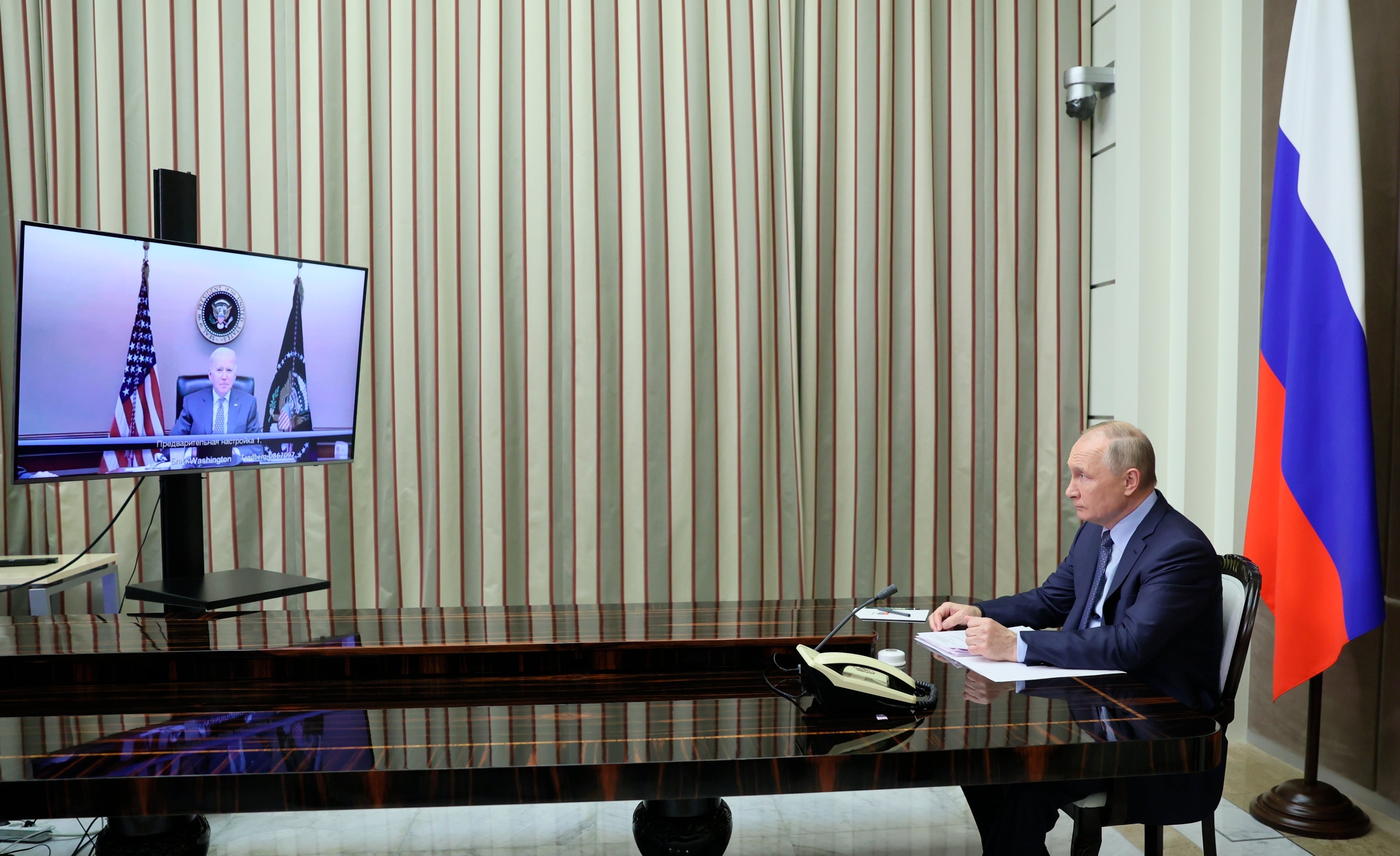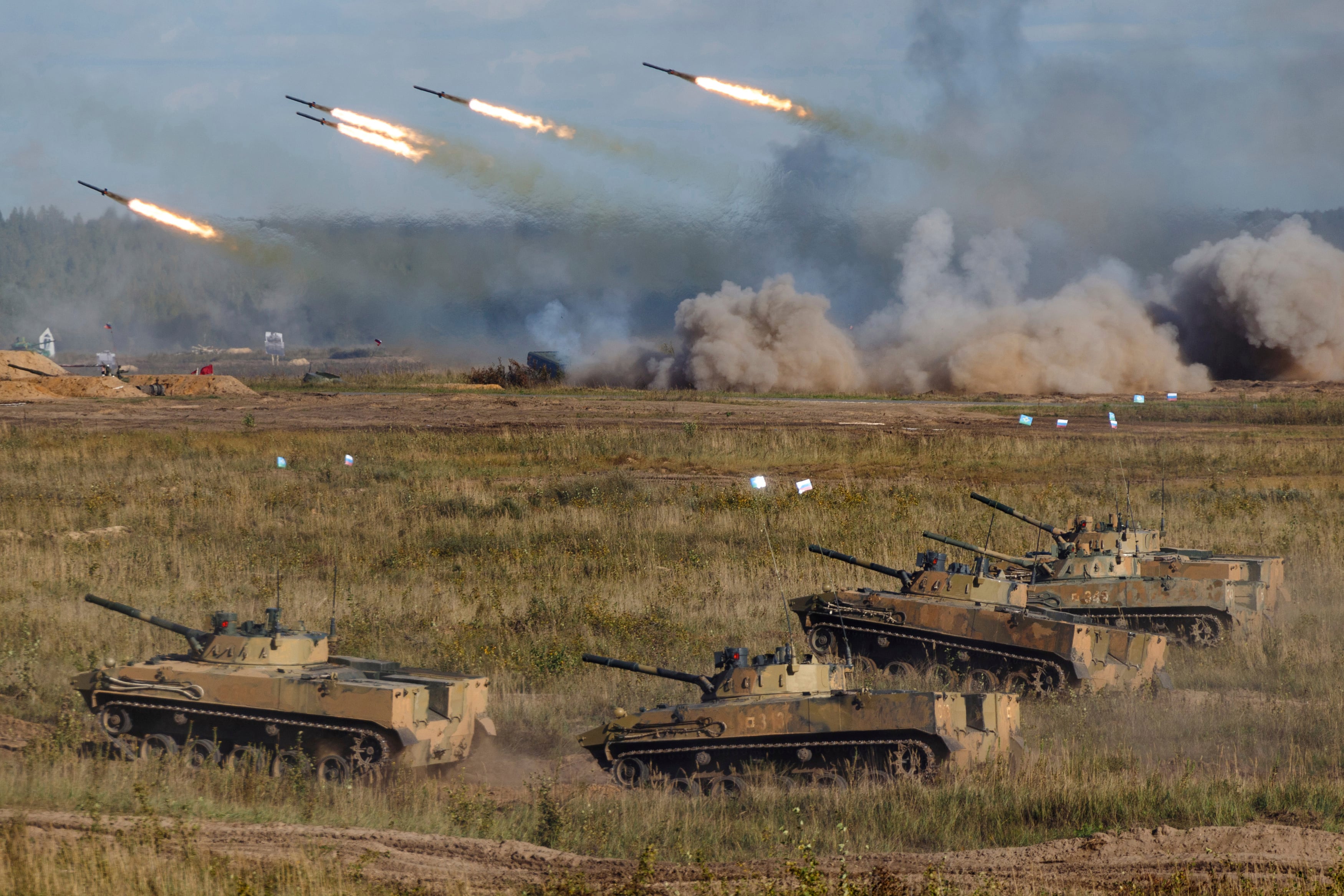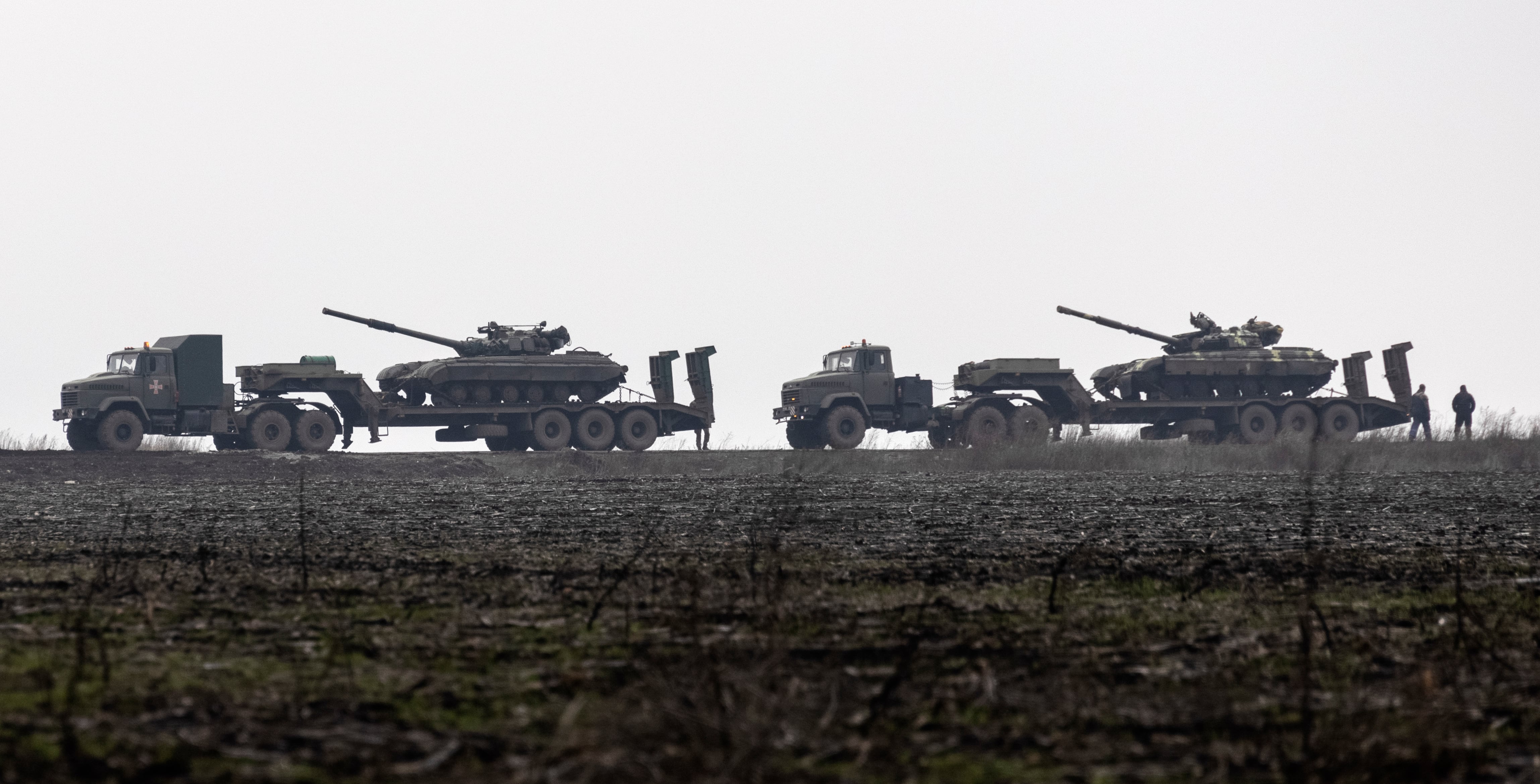A further invasion into Ukraine could be costly for Russian forces even if American and NATO troops don’t get involved because of the assistance they’ve already provided to Ukrainian forces, a panel of outside experts said Monday.
“The Ukraine that we have today is not the same Ukraine in 2014 [when Russia invaded Crimea],” said Luke Coffey, director of the Allison Center for Foreign Policy at the Heritage Foundation, during a panel discussion on tensions in Eastern Europe.
“The Ukrainian Armed Forces are far better trained, equipped and resourced, and are more motivated than they were in 2014 … The Ukrainians can fight for themselves.”
RELATED

Ukrainian defense officials for weeks have been warning the international community about Russian forces massing at their borders, suggesting another invasion of the country could happen in coming weeks.
Russian President Vladimir Putin has said that the moves are designed to protect his country against western aggression, and demanded that the United States and NATO countries vow not to add Ukraine to any military alliance.
Last week, President Joe Biden spoke to both Putin and Ukrainian President Volodymyr Zelenskiy in an effort to calm the situation. He promised both that Russia would face “severe consequences” if Russian military forces advance into Ukraine, but he also said that he would not deploy U.S. combat forces to the region to push back any such assault.
U.S. intelligence officials have said that while Russia appears to be readying for an invasion, senior Russian leaders have not made any final decisions on whether to carry out such a move.
Coffey and other outside observers said that the aggressive posture may be just as effective for Putin as an actual military advance, since he had gotten global attention and meetings with high-level foriegn leaders in response to just the threat.
“It looks very good domestically for him and makes him look like an equal to the U.S. president on the international stage,” he said. “That is very important for Russia and Russia’s image.”
But actually carrying out the invasion could be an expensive slog.
Only a few hundred Russian forces were killed in the months following Russia’s forced annexation of Crimea in 2014, compared to more than 4,000 Ukrainian defense forces, according to the United Nations. All told, some 14,000 Ukranians have died in the conflict.
RELATED

But since 2014, the United States and NATO countries have helped supply the Ukrainian fighters with better weaponry, including anti-tank missiles and some drone technology, and provided expanded training for that personnel, Coffey noted.
“If Putin goes big, it could become very costly for him,” he said. Ukraine likely could not hold back the Russian military indefinitely, he said, but could create a drawn-out conflict that forces Russian leaders to consider the value of the fight.
Still, officials from the think tank said Biden could do more to dissuade Putin from considering an invasion at all.
Nile Gardiner, a policy fellow at the Heritage Foundation, said he believes the administration “should be supplying whatever defensive weapons Ukrainians need to maximize the damage against any kind of further Russian invasion, so that the Russians know that there will be immense costs involved.”
State Department officials said last week that part of a $60 million security assistance package was recently delivered to Ukrainian military forces, with more to come next month. Biden suggested publicly after his meeting with Putin that those assistance plans could be further expanded in coming weeks.
Leo covers Congress, Veterans Affairs and the White House for Military Times. He has covered Washington, D.C. since 2004, focusing on military personnel and veterans policies. His work has earned numerous honors, including a 2009 Polk award, a 2010 National Headliner Award, the IAVA Leadership in Journalism award and the VFW News Media award.



